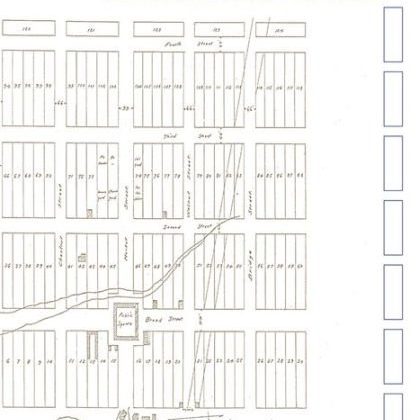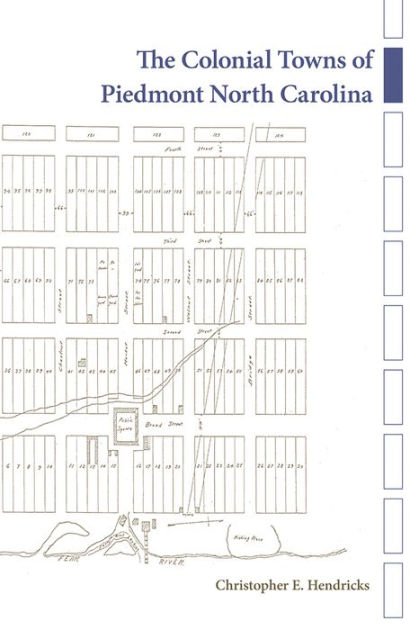

Christopher E. Hendricks is Professor of History at Georgia Southern University, Armstrong Campus. This interview is based on his new book, The Colonial Towns of Piedmont North Carolina (University of Tennessee Press, 2024).
JF: What led you to write The Colonial Towns of Piedmont North Carolina?
CH: I first became interested in towns and town planning when I was a kid. The corridor at my father’s office was decorated with prints of historic town maps from around the world and I spent hours studying them. Eventually, my interests led me to the investigation of towns in the Colonial South. In many respects, Colonial Towns is the culmination of work I have been doing since I began my master’s thesis at William and Mary nearly forty years ago.
JF: In 2 sentences, what is the argument of The Colonial Towns of Piedmont North Carolina?
CH: Town development was instrumental in the development of the North Carolina backcountry, the region known as the Piedmont. Although they were small by European standards, by establishing governance, providing opportunities for trade, and allowing one religious group to build its vision of utopia, towns served as catalysts, easing and encouraging settlement.
JF: Why do we need to read The Colonial Towns of Piedmont North Carolina?
CH: When discussing Colonial America, aside from Charleston and occasionally Norfolk, historians tend to ignore or completely dismiss the development of towns in the South. Particularly in North Carolina with its unique geography (the Outer Banks and lack of navigable rivers), chaotic governance as first a proprietary and then royal colony, massive migration flowing from the Shenandoah Valley, and civil conflict and warfare, towns were vital to development. The story of the eleven towns founded in the third quarter of the eighteenth century is the story of Piedmont North Carolina.
JF: Why and when did you become an American historian?
CH: I have always been fascinated by history. When I was a child, my family visited almost every historic site on the East Coast. I suppose I became a professional historian in high school when I spent summers demonstrating crafts at a living history museum. In college, I worked as an interpreter at another museum. And in graduate school I was an archaeologist, dancer, and character interpreter at the Colonial Williamsburg Foundation. From there, there was no looking back.
JF: What is your next project?
CH: I’m working on a couple of different projects currently, including the development of Southern cooking based on the work of Mary Randolph, a cousin of Thomas Jefferson’s and author of the first truly American cookbook, and in collaboration with coauthor Heather Mason, the life of Anne Pattison, a woman who owned and operated a tavern in Williamsburg in the 1740s.
JF: Thanks, Christopher!